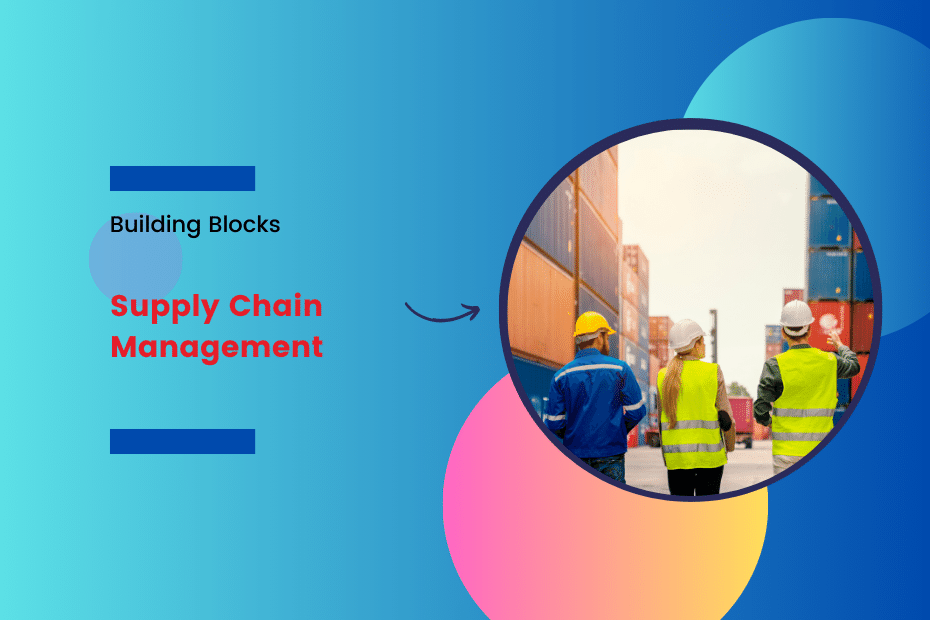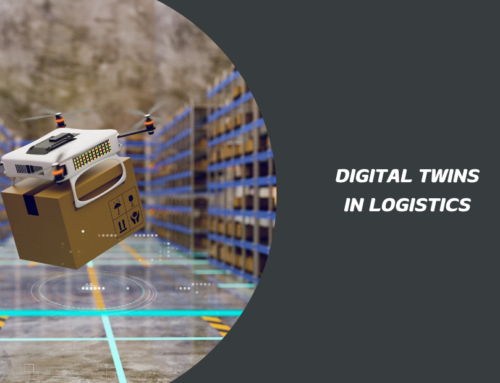Supply Chain Management, or SCM, has evolved from a back-office function to a prime driver of global business success. Think of it as the backbone that supports the entire body of a business, ensuring that everything from raw materials to final products moves smoothly through the chain. In the past, SCM was all about moving goods and materials, but today, it’s a strategic element that touches every corner of the business, from production to customer delivery. This evolution mirrors the dynamic shifts in the global market, where efficiency, speed, and quality are not just desired but required.
For aspiring entrepreneurs, SCM is not just a logistical challenge; it’s a golden opportunity to innovate and drive sustainability. In a world increasingly focused on eco-friendly practices and ethical business operations, mastering SCM can set a business apart. It’s about creating a system that’s not only efficient but also responsible, minimizing waste and maximizing resource use. This approach doesn’t just benefit the planet; it resonates with customers and partners who prioritize sustainability, opening doors to new markets and opportunities.
This article aims to demystify SCM by breaking it down into a 5-part framework. Each component, from demand-driven planning to balancing profit with social and environmental responsibility, plays a critical role in building a robust SCM strategy. By understanding and implementing these elements, entrepreneurs can transform their initial ideas into viable, competitive, and sustainable businesses.
1. The Framework of Supply Chain Management
Demand-Driven Planning
The first cornerstone of effective SCM is demand-driven planning. This principle shifts the focus from merely creating demand to responding to it proactively. Utilizing historical performance data, this approach involves setting clear goals and strategies, outlining tasks with deadlines, and preparing to meet objectives efficiently. Imagine being able to predict what your customers want before they ask for it, reducing inventory requirements and speeding up order fulfillment—all while boosting your revenue and gross margins.
Agility
In today’s fast-paced market, agility within the supply chain is non-negotiable. Being agile means your supply chain can quickly adapt to changes and disruptions, seizing opportunities while mitigating risks. Think of it as being a swift, nimble boxer in the ring, ready to respond to any move the opponent makes. McKinsey’s research underscores the importance of agility, revealing that companies with robust monitoring and agile practices not only meet customer needs more efficiently but also maintain lower inventory levels, giving them a significant edge over their competitors.
Profit, People, and Planet
John Elkington’s triple bottom line concept—profit, people, and planet—brings a holistic perspective to SCM. It challenges businesses to go beyond financial profits to include social and environmental outcomes in their success metrics. This approach suggests that a truly successful supply chain doesn’t just deliver financial rewards but also contributes positively to society and the environment. It’s about achieving a balance where your supply chain operations respect human rights, foster community growth, and minimize environmental impact, all while maintaining profitability. In practice, this could mean adopting greener manufacturing processes or ensuring fair labor practices across your supply chain.
2. Core Building Blocks for SCM
Inventory Management and Transportation
Inventory management is the art and science of balancing supply and demand. It’s about having the right products, in the right quantity, at the right time, and at the right cost. Effective inventory management strategies, such as Just In Time (JIT) and lean manufacturing, can significantly reduce warehousing costs and minimize the risk of excess stock or stockouts. These approaches demand a keen understanding of your supply chain dynamics and the ability to adapt swiftly to changing demands.
Transportation, on the other hand, is the backbone of physical supply chain movement. It’s not just about moving goods from point A to B; it’s about choosing the most cost-effective and efficient transportation modes—air, sea, or land. The decision here influences overall costs, delivery speed, and the environmental footprint of your supply chain. As entrepreneurs, thinking strategically about transportation means considering factors like fuel efficiency, carrier reliability, and the geographical challenges of your supply routes.
Information Technology
In our digital age, Information Technology (IT) plays a pivotal role in SCM by enhancing visibility across the supply chain. Real-time data tracking and analytics allow businesses to monitor inventory levels, shipment statuses, and production schedules across different locations. This level of visibility is crucial for identifying bottlenecks, predicting potential delays, and optimizing logistics processes. Technologies like IoT devices, cloud computing, and AI algorithms have revolutionized SCM, making it possible to respond to changes in demand or supply disruptions in real-time.
Customer Service
At the heart of a successful SCM lies customer service. In today’s fast-paced market, customers expect quick, reliable, and transparent services. Meeting these expectations requires seamless coordination across all components of the supply chain. It’s about ensuring that products are delivered on time, in perfect condition, and with clear communication at every step of the journey. Companies must invest in robust communication systems and customer service practices to minimize errors, manage returns efficiently, and ensure customer satisfaction remains high.
3. Enhancing Supply Chain Resilience
Visibility
Visibility in the supply chain means having a transparent view of all processes, from sourcing raw materials to delivering the final product. It’s the capability to track and monitor the flow of goods, information, and finances in real-time. Enhanced visibility is crucial for identifying potential disruptions early and taking proactive measures to mitigate risks. By understanding the status of each component in the supply chain, companies can react more swiftly and efficiently to unexpected changes, ensuring continuity and reliability.
Collaborative Scenario Planning
Collaborative scenario planning is about preparing for the future by considering a range of possible events and outcomes. It involves analyzing external and internal factors that could impact the supply chain, from market trends and consumer behavior to regulatory changes and natural disasters. By developing cross-functional plans that address these potential scenarios, businesses can manage risks and seize opportunities more effectively. This strategic approach requires input from all stakeholders and leverages AI and machine learning to optimize scenario planning, saving time and resources while enhancing decision-making processes.
Data-Driven Decision Making
In an era where data is king, data-driven decision making is essential for long-term supply chain resilience. This approach aligns supply chain operations with the organization’s overall strategy and key performance indicators (KPIs). By analyzing data from various sources, companies can make informed decisions that not only address immediate challenges but also contribute to sustained success. Metrics such as customer service levels, revenue growth, and environmental impact help ensure that the supply chain supports broader business goals, from improving customer satisfaction to advancing sustainability initiatives.
4. Strategic Approaches to SCM
Demand Planning
In the realm of supply chain management, demand planning stands as a strategic imperative, designed to align inventory with anticipated market demand. Strategies like Just-In-Time (JIT) inventory management exemplify the ethos of lean manufacturing, minimizing unnecessary stock to reduce storage costs while ensuring the availability of products to meet consumer demand. This approach not only enhances operational efficiency but also contributes to financial health by mitigating the risks associated with overproduction and stock obsolescence.
Supplier Consolidation
Supplier consolidation emerges as a tactical move to refine the supply chain’s efficiency and robustness. By narrowing down the supplier base to a few reliable partners, businesses can foster stronger relationships, streamline communication, and negotiate better terms. This consolidation leads to cost savings, improved quality control, and more synchronized supply chain operations. It’s about choosing partners that align with your business goals and values, thereby enhancing the overall supply chain performance and reliability.
Visibility and Optimization
Leveraging technology for visibility and optimization has become a cornerstone for modern SCM strategies. Real-time tracking systems, IoT devices, and advanced analytics platforms offer unprecedented visibility into every stage of the supply chain. This technological integration facilitates proactive decision-making, allowing businesses to anticipate disruptions, optimize routes, and manage inventory dynamically. The end goal is a more agile, efficient, and customer-responsive supply chain, capable of adapting to the ever-changing market demands.
5. Implementing Supply Chain Management in Your Business
To implement an effective SCM system in your business, start by conducting a comprehensive assessment of your existing supply chain processes. Identify areas where improvements can be made, such as reducing lead times, optimizing inventory levels, or enhancing supplier relationships. This initial evaluation will highlight opportunities for streamlining operations and cutting costs.
Next, consider mapping out your entire supply chain to gain a holistic view of the processes, from procurement to delivery. This visualization can help you spot inefficiencies, bottlenecks, or vulnerabilities that could affect your business’s ability to meet customer demands. Armed with this insight, you can then prioritize strategic changes, whether it’s adopting new technologies, renegotiating supplier contracts, or restructuring logistics operations.
It’s crucial to involve all stakeholders in this transformation, ensuring clear communication and alignment with the strategic objectives. Additionally, investing in training and development can empower your team to adapt to new procedures and technologies effectively.
Finally, commit to continuous monitoring and evaluation of your supply chain. By regularly reviewing performance data, you can stay agile, responding to new challenges and opportunities as they arise. This ongoing process ensures your SCM strategy remains aligned with your business goals and market dynamics, driving sustained success and growth.
In Conclusion
Throughout this article, we’ve navigated the multifaceted landscape of supply chain management, highlighting its evolution and critical role in today’s business ecosystem. From the strategic frameworks that drive efficiency and responsiveness to the technological advancements that enhance visibility and optimization, SCM is a complex yet vital component of modern business success. Implementing these strategies requires a thoughtful approach, focused on adapting to market demands, streamlining operations, and embracing innovation. For aspiring entrepreneurs, mastering SCM is not just about logistical prowess; it’s about building sustainable, competitive, and responsive businesses that are prepared to thrive in the global market.









